Matador Network's Blog, page 1154
February 26, 2019
Humpback whale washed ashore

On Friday, marine biologists from the Bicho D’Água conservation group in Brazil discovered a young humpback whale washed ashore on a remote, forested island on the Amazon River. It wasn’t lying on the riverbank though, as might be expected, but lodged in the thick shrubs and brush about 50 feet from the shore — and during a time of year when most humpbacks have already migrated to Antarctica. The whale was about 26 feet long, and had been dead for more than several days.
View this post on InstagramA post shared by Bicho D'água (@bicho_dagua) on Feb 23, 2019 at 1:34pm PST
Renate Emin, president of Bicho D’Água, told the Brazilian news site G1, “We imagine it was floating and the tide took it into the mangrove. The question is, what was a humpback whale doing in the month of February on the northern coast of Brazil? It’s unusual.” The marine biologists are examining the whale to determine its cause of death, and awaiting the results of a necropsy.
“We are collecting information,” said Emin, “identifying marks on the body, to determine if it was trapped in a net or hit by a boat.” While they won’t know for sure until next week, it’s believed that the whale had been detached from its mother before it died. As reported by The Guardian, according to Peter Evans, director of the Sea Watch Foundation, “This calf probably got separated from its mother, maybe its mother had died, in the southern summer, and then wandered about trying to find food.” 
H/T: The New York Times

More like this: 10 hotels that are perfect for whale watching this spring
The post Humpback whale found dead on small Amazon island appeared first on Matador Network.

Palaces to visit in St. Petersburg

You may not live inside the walls of a sprawling royal complex, but at these gorgeous palaces in St. Petersburg, you can certainly pretend. Enter the prestigious doors and walk from room to room, dreaming of days gone by; these walls have seen a level of opulence many of us would find hard to fathom.
Many palaces in St. Petersburg, Russia, are located just a bit outside of the town center, but fortunately, they’re easily accessible via super cheap public transport. Plan a trip to one or all of them; each palace has a distinct character, some have amazing gardens well worth exploring, and all are filled splendor that surpass even the most lavish castles of your childhood fairy tales.
1. Catherine Palace

Photo: Vladimir Sazonov/Shutterstock
Located in the town of Pushkin, south of St. Petersburg proper, the Catherine Palace (known as the Great Palace of Tsarskoye Selo until 1910) is revered the world over for its majestic Russian Baroque architecture and over-the-top interiors, including the Amber Room, once considered to rank among the wonders of the world. The palace was commissioned by Catherine I, second wife of Peter the Great and eventual Empress of Russia, in 1717. Various bridges and pavilions adorn the property, adding to its beauty, including the famous and majestic Marble Bridge.
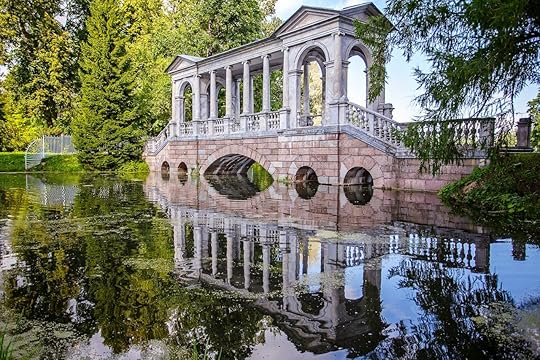
Photo: Vladimir Sazonov/Shutterstock
A rich golden-orange hue, the Amber Room (a gift to Peter the Great, ruler over Russia for over 40 years) was so named because it was encased in amber and gold and studded with jewels — and thus, unsurprisingly, fell victim to looting Nazis during World War II. A replica of the Amber Room was completed in 2003, but the original contents of the room are missing to this day.

Photo: Alexandra Lande/Shutterstock
It takes less than an hour to get from the center of St. Petersburg to the palace — just hop on a train at the Vitebsky railway station and get off at the Tsarskoye Selo station. The Catherine Palace is open for tours daily.
2. Winter Palace

Photo: Brian Kinney/Shutterstock
Now home to the world-class Hermitage Museum — the second-largest art museum in the world, after the Louvre in Paris — the Winter Palace was built as the official imperial residence for Russian royalty in the early 1700s and served in that capacity until 1917, when it became a museum following the Russian Revolution. Centrally located in St. Petersburg, it features 460 rooms spread across just three stories.

Photo: Brian Kinney/Shutterstock
Outside the palace’s striking blue-green facade, Palace Square is the sprawling central square of St. Petersburg and contains the iconic Alexander Column, a monument to Russia’s victory over France and Napoleon. The Hermitage Museum is open for tours every day except Mondays and admission costs about $10 (700 rubles).
3. Saint Michael’s Castle

Photo: Irina Sen/Shutterstock
Construction on Saint Michael’s Castle, a grand and architecturally diverse estate, began in 1797 and was intended for Emperor Paul I — however, mere weeks after moving into Saint Michael’s Castle, his worst fears came to pass and he was murdered in his own bedroom by members of his guard.
The castle, which is located in the historic center of St. Petersburg, along the Fontanka River, has served as military housing, an engineering school, and now houses the main branch of the State Russian Museum. It’s open to visitors every day except Tuesdays. Admission is around $6 (400 rubles).
4. Peterhof Palace and Gardens
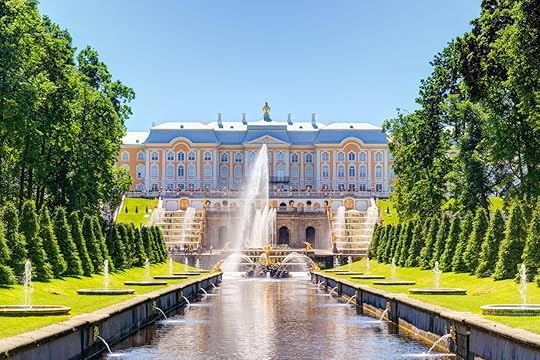
Photo: Viacheslav Lopatin/Shutterstock
Located on the bank of the Gulf of Finland in Peterhof, a town west of St. Petersburg, Peterhof Palace and Gardens was Russia’s answer to France’s Palace of Versailles. The palace was technologically advanced for its time; Peterhof’s innovative fountain system, created in 1720, allowed the 150 fountains of the palace complex to operate without the aid of pumps.

Photo: Roman Evgenev/Shutterstock
Once a grand summer residence for emperors, Peterhof Palace and Gardens has since evolved into the Peterhof State Museum Reserve. The main facade of the palace stretches for almost 1,000 feet. On the grounds, visitors will find various fountains, gardens, labyrinths, and more.
To reach the palace from St. Petersburg’s city center, hop on a train at the Baltiyskiy vokzal railway station to the New Peterhof stop — a 40-minute ride. The palace is open to visitors every day except Mondays and costs about $9 (600 rubles) to enter. The upper garden is open daily and offers free admission.
5. Beloselsky-Belozersky Palace

Photo: Baturina Yuliya/Shutterstock
Built in the mid-1800s, Beloselsky-Belozersky Palace became famous for the lavish parties once thrown in its many halls. However, the upkeep soon became too much for the wealthy homeowner (the widowed princess and heiress Elena Pavlovna Beloselskaya-Belozerskaya) to maintain, so it was sold and restored — and painted a deep shade of pink as part of the facade restoration process in 1897.
It later became headquarters for the Regional Committee of the Communist Party but, today, visitors flock to the site for its cultural center, concerts, and guided tours. Tours of Beloselsky-Belozersky Palace, which is located along the Fontanka River and on Nevsky Prospekt, the main avenue of St. Petersburg, must be pre-arranged and cost bout $3 (200 rubles).
6. Yusupov Palace
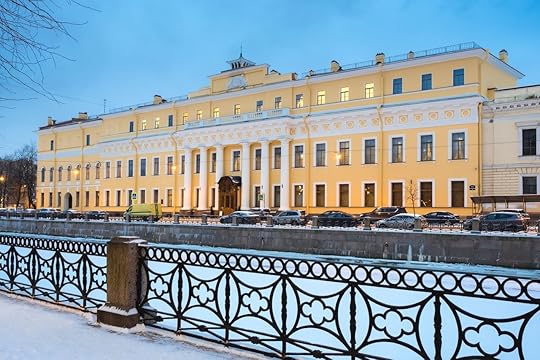
Photo: Olga Visavi/Shutterstock
Located on the Moika River in St. Petersburg proper and one of just two surviving residences of the extremely wealthy Yusupov family, Yusupov Palace was built by a French architect in 1776. However, it did not take on its current appearance until it was acquired by the Yusupov family in the 1830s, who then filled it with their massive art collection. The palace’s lavish interiors feature an incredibly ornate theater, art galleries, parlors, state rooms, a Moorish lounge straight out of A Thousand and One Nights, and is open to visitors daily.

Photo: StockphotoVideo/Shutterstock
Most notably, however, the palace is infamous to this day as the site of the murder of Grigori Rasputin, a Russian mystic and friend to the family of Tsar Nicholas II, the last monarch of Russia.
7. Stroganov Palace

Photo: Sergei Butorin/Shutterstock
The opulent interiors of Stroganov Palace in St. Petersburg are some of the most visually stunning in the world, with sprawling frescoes, brightly painted walls, elaborate decorations, paintings, and marble sculptures adding to the palace’s overall appeal. In fact, when Stroganov Palace was nationalized in 1918, it functioned as a museum of aristocratic life.
The palace is now a branch of the Russian Museum, restored and preserved for future generations to enjoy. It is open to visitors every day except Tuesdays.
8. Menshikov Palace
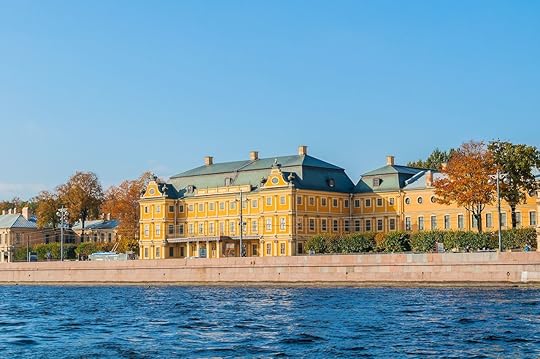
Photo: Marina Zezelina/Shutterstock
Originally owned by Alexander Menshikov, who rose to notoriety as a member of the court of Peter the Great and later became the first governor of St. Petersburg, the stone Menshikov Palace is one of the oldest buildings in St. Petersburg. It is now part of the Hermitage Museum — but always housed great art, as Menshikov himself was a collector. When Menshikov was overthrown and exiled to Siberia in 1727, the palace became a prestigious high school for Russian statesmen and military leaders.
Menshikov Palace, located in St. Petersburg, is open to visitors daily and offers free admission to all visitors on the first Thursday of the month.
9. Pavlovsk Palace
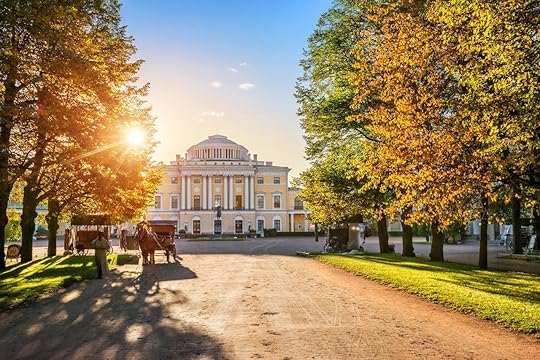
Photo: Baturina Yuliya/Shutterstock
Rather than sumptuous decorations, the Pavlovsk Palace in St. Petersburg stuns in its elegance and perfect proportions; the architect, Charles Cameron, admired the austerity of classical design and reflected this in his work. The interior, however, is a bit more ornate, with elegant furnishings fit for Russian royalty. Emperor Paul I added on to the palace when he ascended to the throne in 1796.
Later, the palace was pillaged by Nazis during wartime, and it took a great many years for reconstruction work to restore the structure to its former glory. Today, Pavlovsk Palace is open to visitors all but one day per week (opening days change depending on the season) and costs about $8 (500 rubles) per adult. It’s located south of St. Petersburg proper, in the town of Pavlovsk, a one-hour train ride from Vibetski railway station.
10. Gatchina Palace

Photo: Anton Kudelin/Shutterstock
Located in Gatchina, a town located one hour away by train from the center of St. Petersburg, Gatchina Palace is now called the Gatchina Palace and Estate Museum, with rooms, exhibitions, and even an underground passageway available for visitors to explore (open daily). It has been home to four tsars in its lifetime.

Photo: Гатчинский Дворец/Facebook
The palace opened to the public in 1918, soon after the Russian Revolution, but was badly damaged during World War II, and restoration work did not commence for decades afterward. Today, however, the museum hosts yearly exhibitions organized with other museums in Russia. 

More like this: 7 amazing Russian churches that seem right out of a fairytale
The post 10 gorgeous palaces in St. Petersburg appeared first on Matador Network.

The best reasons to drive a rental

Driving abroad can be intimidating for a number of reasons. It requires plotting a route that won’t lead you into dead-end alleys or crashing through jungle vines or off the side of a cliff. You have to take responsibility for a rental car, likely putting down a good chunk of change for an insurance deposit. And you’ll need to learn foreign driving customs, dodge speeding locals, navigate dilapidated roads, and occasionally steer around livestock.
But facing those challenges is entirely worth it for the freedom of driving yourself through your vacation. While it may seem like work, driving enhances every other aspect of a trip. Here’s why you should get over your fears and rent a car.
You decide your own schedule.

Photo: Ekaterina Pokrovsky/Shutterstock
Strict train and bus timetables tie you to set arrival and departure dates, which can really wear you out after a few days. An overly relaxed transit system is even worse, though, because you never know if you’ll leave or arrive on time. Behind the wheel of a car, you are your own master. You can linger over breakfast and leave a bit later, or drive in early to your next destination to catch the sunset from the roof of your hotel.
You’re free to change your plans at any time.

Photo: Estrada Anton/Shutterstock
Driving doesn’t just allow you to shift your schedule by an hour or two, but by whole days or weeks. If you really love a particular city, feel free to stay an extra day before moving on. If it turns out your hotel room smells like if fish grew feet and then never washed them, you can check out immediately and hit the road.
It’s the best way to really learn about the country.

Photo: Aivita Arika/Shutterstock
Getting ferried about a country by a local certainly offers a relaxing way to see a foreign land, but you only really get to know a country by driving it. You’ll learn local geography through the roads, and you’ll better understand your fellow drivers — or other travelers on the road like bicyclists and livestock.
You can get to areas you wouldn’t otherwise.
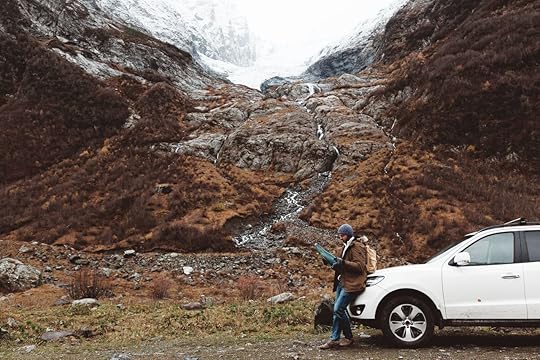
Photo: Alena Ozerova/Shutterstock
As extensive as public transportation networks may be, trains and buses will keep you on the typical tourist route, seeing the same sights and cities that appear on everyone else’s Instagram. Get off that pristine Disney track and drive yourself into the unknown…Well, arm yourself with a good map and drive into the semi-known.
You’ll never be truly lost.

Photo: Dean Drobot/Shutterstock
Google Maps may not be able to give you turn-by-turn instructions deep in the Amazon or high in the French Alps, but most smartphones can track your location offline. Even if you’re the type of horrible navigator who can get lost in a grocery store, you’ll never truly drop off the grid entirely — assuming you charge your phone, that is. Plus, many rental cars offer an old-school (if you consider the early 2000s old-school) mountable GPS, which typically has a consistent signal.
You will be humbled by the natural landscape.

Photo: Flystock/Shutterstock
A sudden sense of wonder will likely overtake you as you drive through the open terrain with no one around except your travel companions. Whether you’re carving your way through a barren desert, rocky seaside path, or dense forest, the natural landscape can speak directly to you without distractions like bus passengers or train-ticket takers.
You don’t need to drive stick.

Photo: Roman Globa/Shutterstock
While knowing your way around a stick shift is certainly a useful skill when driving around the world, it’s not an absolute prerequisite. There are more and more automatic cars in the world, and those cars are slowly finding their ways to countries traditionally dominated by manual transmission. Just be aware you might have to pay a bit more for your rental and you should book early to avoid competing with other automatic-driving tourists. 

More like this: The 10 most freakishly terrifying switchback roads in the world
The post Yes, you really should drive abroad even if it scares you appeared first on Matador Network.

February 25, 2019
Best TV shows set in every state

Forget the airplane, the automobile, and the iPhone. The greatest American invention in history is hands down the television. Not only has it given us a way to see the world without leaving our living room, but it was also an electronic babysitter long before the tablet and gave families something to do at dinner other than talk to each other. Over the 70-plus years TV has been around we’ve seen thousands of shows, set all kinds of places around our great land. We took a look through TV history and came up with the best scripted show set in every state.
Alabama
Hart of Dixie
The CW, 2011-2015
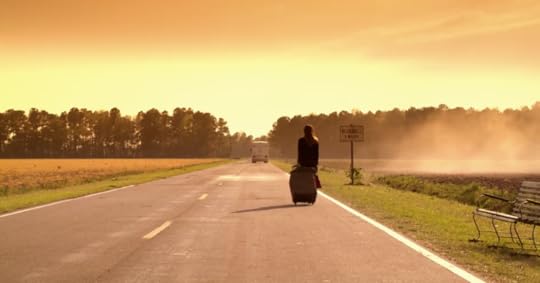
Photo: The CW
This show was classically CW, a funny, occasionally touching drama that never got too heavy and was always easy to watch. The plot centered around Zoe Hart, a big-city New Yorker who’s drawn to tiny Bluebell, Alabama, when she inherits her previously unknown father’s medical practice. Zoe finds herself at odds with her surroundings at first, then accepts them, then ultimately falls in love and gets married. Predictable? Yes. But unless college football can be considered a TV series, there’s not a whole lot of competition coming out of Alabama.
Alaska
Northern Exposure
CBS, 1990-1995
This early-90s CBS comedy was the quirkiest show of its era, showcasing the kinds of castoffs, loners, and all-around eccentrics that populate America’s most sparsely populated state. Like many shows, it focused on a New Yorker thrust into a rural environment, this one chronicling Dr. Joel Fleishman’s journey into Sicily, Alaska. There he meets a crusty retired astronaut, a freewheeling radio DJ who later became famous as Sex and the City’s Aiden, and a plucky bush pilot named Maggie who feuds with Joel over several seasons of sexual tension. The whole show was filmed in Roslyn, Washington, and for many years the town became a popular day trip for tourists visiting Seattle.
Arizona
Medium
NBC/CBS, 2005-2011
Last Man on Earth gets a solid honorable mention here, but the longevity of Patricia Arquette’s vehicle about a mom who can talk to the dead and see past events gets it the Arizona nod. Arquette’s character Allison DuBois helps the purposefully misspelled Mariposa County District Attorney solve and prevent crimes. Sometimes encountering cops who don’t believe in her abilities, often “playing by her own rules” when she foresees a crime that is about to happen, and struggling with three daughters who seem to have the same gift.
Arkansas
Evening Shade
CBS, 1990-1994
One of the more under-appreciated shows of the Linda Bloodworth-Thomason dynasty was this charming comedy that starred Burt Reynolds as Wood Newton, a retired football player returning to his hometown to coach. Think of it as a kinder, gentler Eastbound and Down, where Wood took the perennially losing Evening Shade high school football team and made it a winner. The show earned Reynolds his lone Emmy win for Lead Comedy Actor in 1991.
California
Arrested Development
Fox, 2003-2006; Netflix, 2013-present

Photo: Fox
Because nearly every third TV show is set in California, the list of potential winners here is long. But Arrested Development did a lot for television, introducing us to the hand-held serial concept later adapted by The Office and Parks and Recreation while perfecting the straight-man-surrounded-by-lunatics concept led by Jason Bateman’s Michael Bluth. The show managed to capture perfectly the Orange County ethos of delusional wealth and conspicuous consumption without getting too cliché like other OC-based series of the time. It showed the world the delicacy that is the Newport Beach frozen banana and ensured the world will never hear The Final Countdown the same way again. While the reboot is still questionable, the original is not only the best show from the Golden State but also the most Californian. And for that, it narrowly edges out Fuller House.
Colorado
South Park
Comedy Central, 1997-present
Ignore for a moment that people legally allowed to drink were born after this show premiered during the Clinton administration. South Park has become a mouthpiece of American culture over the past 22 years and perhaps the country’s single greatest source of instant satire. The collection of crudely drawn, foul-mouthed kids in a little Colorado town have sent up everything from Somalian pirates to AIDS to radical Islam, showing that if you can manage to offend everyone, then you’ll ultimately offend no one. It also launched the careers of Trey Parker and Matt Stone, who among other things gave us Book of Mormon.
Connecticut
Gilmore Girls
The WB/CW, 2000-2007
Gilmore Girls is sort of like the cilantro of TV shows — most people generally like it, some are too obsessed, and then there’s a small segment of the population who hates it no matter how it’s presented. The quick-witted, bantering, play-like pace of the show has become a trademark for creator Amy Sherman-Palladino, who won an Emmy for it this year with The Marvelous Mrs. Maisel. But her original creation chronicling single mom Lorelai Gilmore and her gifted daughter Rory in their small fictional town of Star’s Hollow has gained a worldwide cult following. So much so that it draws fans from around the globe to an annual Gilmore Girls fan festival in Kent. As for the limited-series Netflix reboot, we won’t talk about that.
Delaware
The Pretender
NBC, 1996-2000
Part Quantum Leap, part The Fugitive, this show followed the adventures of Jarod, a man who can master complex skills almost instantly and impersonate a person in almost any job. He’s captured as a child by an evil research center called, appropriately, The Centre. Though throughout the show’s four-year run Jarod found himself everywhere from Las Vegas to Miami to Pittsburgh, impersonating people to help solve crimes and right wrongs, the Centre is in Blue Point, Delaware.
Florida
The Golden Girls
NBC, 1985-1993

Photo: NBC
Yeah, yeah, yeah, plenty of good cases can be made for the moody pastels of Miami Vice, or the cunning brutality of Dexter, or Silk Stalkings. But did any of those include a SINGLE St. Olaf story? No. The answer is no. And when it comes to shows set in Florida, nothing will ever top the Golden Girls. It was not only the first comedy to feature an all-female ensemble cast, but it was also the first to show that women over 50 can have a sex life. It also broached topics like acceptance of gay family members, immigration, homelessness, and the proper way to serve cheesecake. And above all else, it was just downright bitingly funny, with quick wit and clever jokes that still hold up 30 years later. It earned Emmys for all the principal actors and for the show itself, a feat that will probably never be duplicated by a 30-minute sitcom.
Georgia
Dukes of Hazzard
CBS, 1979 – 1985
Most people who refer to a pair of unreasonably high shorts as “Daisy Dukes” have no idea they are referring to shorts worn by a TV character named Daisy Duke, a buxom blonde cousin to the good ‘ole Duke boys, Bo and Luke. These two acted as sort of hilljack vigilantes, fighting against the evil Boss Hogg and the corrupt sheriff he controlled. The show was probably best known for the ramp-assisted aerial stunts done by the show’s iconic car, General Lee, and for the freeze-frame narration asking, “How them Duke boys gonna find their way outta this?”
Hawaii
Magnum, PI
CBS, 1980-1988
Even though Hawaii Five-0 has managed two full series, have you ever seen anyone dress up as Steve McGarrett? Did you even know the main character’s name was Steve McGarrett? Magnum, on the other hand, is a Hawaii icon, with his trademark moustache, Hawaiian shirt, Detroit Tigers hat, and way-too-short shorts. The show was more than just Tom Selleck looking uber-80s, though; it was a pretty gripping adventure drama that followed Magnum as he investigated people and crimes around the island with the help of his butler Higgins. Like a funnier, cleaner Dog, The Bounty Hunter. And it gave producer Donald Bellisario is bona fide hit before he went and made Quantum Leap.
Idaho
Wayward Pines
Fox, 2015-2016
On the surface, the premise of this short-lived Fox sci-fi vehicle sounds riveting: A secret service agent (played by Matt Dillon!) heads to a small Idaho town to investigate the disappearance of two fellow agents, then discovers he can never leave. Because Wayward Pines, you see, is surrounded by an electric fence, and anyone who tries to escape is punished by public execution. While the tourism department could definitely use some pointers, it does manage to create a fully dystopian paradise in rural Idaho. Sadly, the show did not live up to its nail-biting concept and lasted only 20 episodes, but the Idaho competition is thin.
Illinois
Roseanne
ABC, 1988-1997

Photo: ABC
Though networks actually required every new drama from 2014-2017 to include the word “Chicago” in the title, and we’d be remiss not to tip our No Ma’am hats to Al Bundy, no show captured blue-collar midwestern life quite like Roseanne. The show was the first family sitcom to get a little nasty, delving into issues working-class families dealt with like involuntary unemployment, teen sex, and unplanned pregnancy from a funny, but ultimately serious, angle. The final few seasons got real weird, and let’s not even talk about the short-lived reboot that nearly tanked the legacy of the show, but the Conners of Lanford were the most dynamic and painfully real sitcom family of all time, representing Illinois better than any group of civil servants from Chicago.
Indiana
Parks and Recreation
NBC, 2009-2015
The scenes of Leslie Knope trying to talk sense to angered masses of comically misinformed Pawneeians are hilarious-but-sad harbingers of the political climate that came after. And those are only in a handful of episodes. This show picked up the office mockumentary baton from The Office and ran with it, launching the careers of Chris Pratt and Aziz Ansari in the process. But perhaps its most impressive feat was explaining away how Pratt went from lovably-doughy frat boy to Jurassic World-ripped in one off-season with a simple, “I stopped drinking beer.”
Iowa
Drexell’s Class
Fox, 1991-1992
Those old enough will have vague recollections of this show playing in the background while they did their homework between The Simpsons and Beverly Hills, 90210. Fox obviously thought it had a winner, slating this Dabney Coleman vehicle between its two biggest stars back in 1991. It told the story of a crooked Wall Street financier teaching school in rural Iowa to pay back taxes, and Coleman and the ensemble cast of children were actually often funnier than the cartoon that preceded them. But since most of the audience was, in fact, killing time between shows while this aired, and Mr. Drexel lasted only one season.
Kansas
The Phil Silvers Show (Sgt. Bilko)
CBS, 1956-1959
Nat Hiken was one of the more underrated comedic minds of the 20th century, who in addition to Car 54, Where Are You? also created this showcase for the immensely talented Phil Silvers. If you didn’t see the 1996 Steve Martin film adaptation, the show centers around a Damon Runyan-esque Army sergeant at Ft. Baxter, Kansas. Bilko was more concerned with bilking money out of his colleagues, the Army, and anyone else he could find than doing any actual work, and he often got his vastly loyal soldiers to help him in his schemes. The role earned Silvers an Emmy in 1955 and earned itself two Emmys for Outstanding Comedy Series.
Kentucky
Justified
FX, 2010-2015

Photo: FX
Though it never got to the binge level of some other FX shows, this story of a US Marshall bringing rough justice to the coal mining towns of Kentucky was still one of the most critically acclaimed programs of its era. Based on Elmore Leonard’s book Fire in the Hole, it chronicled Raylan Givens, played by Timothy Olyphant, who was reassigned from Miami to his hometown in rural Kentucky. As one might expect, it depicted Givens fighting his way through the addicts, junkies, and backwoods criminals and earned two Emmys for Margo Martindale and Jeremy Davies.
Louisiana
True Blood
HBO, 2008-2014
Back in the late-2000s, vampire-mania was in full swing. Twilight ruled the box office and HBO premiered this drama starring Oscar winner Anna Paquin as an eccentric, telepathic waitress in small-town Louisiana. True Blood was based on The Southern Vampire Mysteries, books that centered on a world where a synthetic blood called TruBlood allowed vampires to become part of mainstream society. The show depicted vampires’ struggles for equal rights, using clever terms like “coming out of the coffin.” While it was still pure late-2000s vampire sci-fi — complete with a love story between Paquin’s character and a vampire, like, seven times her age — True Blood still had an underlying morality message that hit home for many.
Maine
Murder, She Wrote
CBS, 1984-1996
The biggest mystery of this show wasn’t the countless murders, or why people ever invited Jessica Fletcher ANYWHERE after realizing every time she showed up someone got killed. It’s how Sheriff Amos Tupper kept his job when little Cabot Cove, Maine, saw almost a homicide a week for 12 years, and he always needed a civilian to help him solve them. Plot holes aside, this show starring Angela Lansbury as a mystery writer who solves crimes drew 30 million viewers a week, set records for Golden Globe nominations, and won Lansbury four Emmys. A lot of people had to die to make it happen, but it was worth it to keep us entertained on Sunday nights for over a decade.
Maryland
Homicide: Life on the Street
NBC, 1993-1999
Before Barry Levinson created one of America’s first binge-worthy shows with The Wire, there was Homicide, a criminally low-rated Baltimore cop drama that made NYPD Blue look like Blue’s Clues. Homicide might have showcased the best acting of any cop drama, from the perpetually beleaguered Lt. Al Giardello, played by Yaphet Kotto, to the comical Richard Belzer, to the intense-then-brain-damaged Frank Pembleton, played masterfully by Andre Braugher. Its crowning achievement was an episode in which Robin Williams plays a tourist who watches his wife die during a daytime robbery outside the then-new Camden Yards. If you don’t cry watching that performance, you’re dead inside.
Massachusetts
Cheers
NBC, 1982-1993

Photo: NBC
To our knowledge, this is the only television show to launch a worldwide chain of spinoff bars, none of which look even remotely like the TV set or the Bull and Finch Pub in Boston. Beyond that, the 11-year run also launched the careers of Woody Harrelson, Kirstie Alley, and Shelley Long and made Ted Danson a household name. Cheers had so much influence it became part of the language, where bar regulars are referred to as “The Norm” of whichever establishment they frequent and masters of minutia are often called “a real Cliff Clavin.” It was also where we first met Dr. Frasier Crane, who had a little success of his own later on in Seattle.
Michigan
Home Improvement
ABC, 1991-1999
Tim “The Toolman” Taylor was sort of the 1990s icon for old-school dad, a guy who built things by hand and enjoyed beer, football, and chatting with his neighbor across a fence. In real life, he’d have probably ended up a little like Tommy Lee Jones character in No Country for Old Men, standing around with Al talking about how the world has passed them by. But in TV-land, he’s still a lovable dad with a hit show who never seems to be finished building his house, despite his wife’s perpetual eye rolling. It’s a classic TV formula that Tim Allen carried for almost an entire decade, and that kind of longevity must be respected. Also, it gave the world Justin Taylor Thomas. So there’s that.
Minnesota
The Mary Tyler Moore Show
CBS, 1970-1977
The word “groundbreaking” gets thrown around a lot when describing TV shows of the ‘70s and ‘80s, but this one that centered on a single, ambitious woman focusing on her career as a news producer rather than finding a husband was a first for prime time. It told the story of Mary Richards, who heads to Minneapolis after a failed relationship and ends up a producer of the evening news. The ensemble cast was one of the best ever, with Ed Asner, Valerie Harper, Cloris Leachman, and Betty White joining Moore. It earned three straight Outstanding Comedy Emmys and three Emmys for its lead actress.
Mississippi
In the Heat of the Night
NBC/CBS, 1988-1995
Cop shows in the 1980s didn’t often delve into issues of racist police forces in the rural south, but this show based on a 1965 book and 1967 movie gave a little glimpse into what black police officers faced when working in places like fictional Sparta, Mississippi. The story of Detective Virgil Tibbs, recruited to Sparta to help counter the local cops’ reputation for racism and incompetence is fascinating. His interactions Chief Gillespie, where Tibbs shows frustration when Gillespie sees progress, are an early demonstration of our disconnect when it comes to racial issues. But beyond that, the show made the police, and life in rural Mississippi, human for those who knew nothing about it.
Missouri
Ozark
Netflix, 2017-present
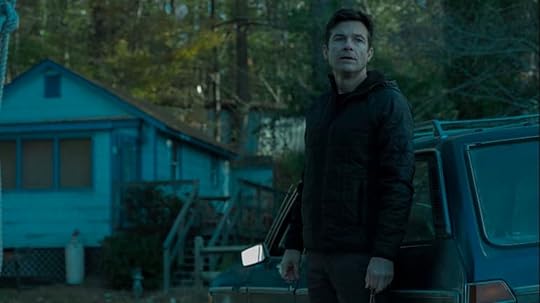
Photo: Netflix
Though the good-guy-caught-up-in-a-nasty-world premise was almost perfected by Breaking Bad, Ozark manages to do in a season what it took that show nearly three to accomplish: Hate the main character. Jason Bateman’s money-laundering Marty Byrd is both sympathetic and loathsome, a normal guy who gets greedier than he should and refuses to take what he has coming to him. The show also deftly shows the bizarre local culture of rural Missouri, an area not often credited with having terrifying, opium growing hillbillies. Ozark combines the terror of Breaking Bad’s cartels with the backwater lawlessness of Deliverance, and though it’s only through two seasons, it’s easily the best show ever set in the Show Me State.
Montana
Buckskin
NBC, 1958-1959
For a state so big and beautiful, alarmingly few TV shows have been set in Montana. The only one worth mentioning was this 1950s TV western about a 10-year-old boy whose widowed mother runs the town boarding house in fictional Buckskin, Montana. For such a brief run, the show put out an impressive 39 episodes, spurring a rebirth of reruns in 1965.
Nebraska
Heartland
CBS, 1988-1989
Allegedly, ABC is set to debut a new series called Bless this Mess this year, using the tried-and-true New Yorker-moving-to-a-small-town formula to try and pump some life into the uninspiring list of TV shows set in Nebraska. For now, the highlight was this short-lived 1980s sitcom about an old farmer who moves in with his kids after losing his farm. Hilarity did not exactly ensue as the show barely made it through a season after it was brought in as a 1988 mid-season replacement.
Nevada
CSI:Crime Scene Investigators
CBS, 2000-2015
During the 2000s, it was pretty much impossible to turn on your television without a forensic police drama filling the screen. The reason was CSI, the original of the franchise that focused on entomologist Gil Grissom and his team of investigators who used science to solve crimes on the Las Vegas strip. The show taught us more about insects and DNA mapping than we ever thought we’d know, each week bringing a new crime scene inexplicably filled with bodily fluids. Not only did it birth a popular Miami spinoff, it also launched the forensic drama genre for the rest of the decade and stands as one of the cornerstone shows of the last 20 years.
New Hampshire
Stan Against Evil
IFC, 2016-2018
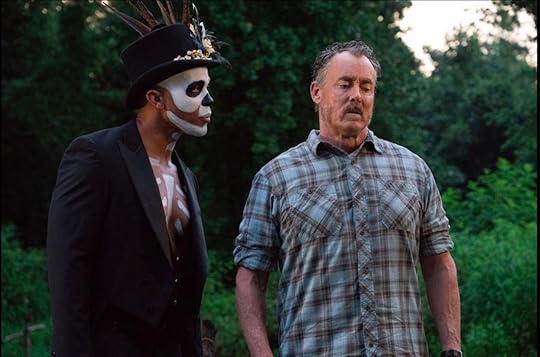
Photo: IFC
If that handful of Breaking Bad episodes set in a remote New Hampshire cabin could qualify as a full show, it would easily be the winner here. But lacking a full season, we’re going with this Horredy set in a fictional New Hampshire town built on an old witch-burning site. It stars Dr. Cox from Scrubs as a recently removed town sheriff who finds himself fighting ghosts and demons bent on revenge against the police. He joins forces with the new sheriff to, as the title might suggest, battle evil. Over two seasons, they were mostly successful.
New Jersey
The Sopranos
HBO, 1999-2007
A touching family drama… about mobsters? David Chase somehow made it work, creating a Hollywood mob legend topped only by The Godfather. If you never watched, the show followed mob boss Tony Soprano, his family, and his “co-workers” as they introduced words like “whacked” and “goomah” to the American vocabulary. It was the first gangster vehicle to look at the human side of the mob, following Tony on visits to his therapist Dr. Malfi and through family squabbles with his wife Carmela and his kids Meadow and Tony Jr. Though the inexplicable ending left a lot of longtime fans hanging, The Sopranos — which aired Sunday nights — may have been the last great appointment television show.
New Mexico
Breaking Bad
AMC, 2008-2013
Really a one-horse race in the Land of Enchantment where this series about a high school chemistry teacher who teams up with a nefarious ex-student to make the best meth in the world is considered by some the best show in history. Though it took a season or two to get rolling, once it did each episode included a fist-clenching, “How the F is he gonna get out of this one” moment that was solved in the most creative ways. In addition to stellar writing and gripping plots, the show also had an acute attention to detail, using its setting in Albuquerque to make exterior scenes visually stunning. And ensuring characters used flip phones through all five seasons, as the plotlines remained stuck in 2008/2009.
New York
Law & Order
NBC, 1990-2010
Before there was CSI, SVU, NCIS, or any other acronym-titled police procedural drama, there was Law and Order. The granddaddy of them all followed a revolving cast of detectives and district attorneys while they, as the shows cell-slamming opening suggests, “investigate crimes… and prosecute the offenders.” It gave work to nearly every actor in America, as if you ever peruse a Playbill you’ll see nearly the entire cast has Law & Order credits. It also birthed multiple spinoffs, which in the case of SVU became a classic in its own right. And though New York has had hundreds of shows set there, none had the impact of Dick Wolf’s stalwart — except maybe Sex and the City, because people are STILL insisting they’re such a Samantha.
North Carolina
Eastbound and Down
HBO, 2009-2013

Photo: HBO
Kenny Powers could absolutely kick Gomer Pyle’s ass and wouldn’t even waste his time with those kids from One Tree Hill. The sheer disgusting magnetism of the washed-up pitcher who returns to his hometown to teach middle school PE is part of why America couldn’t get enough of this show over its four seasons. Powers’s no-filter arrogance makes him both entertaining and sad, a sympathetic jerk who you both love and hate within seconds. The show was produced by Will Ferrell, which explains much of the juvenile comedy. But also explains why we laugh at it anyway.
North Dakota
Fargo
FX, 2014-present
Much like the film it’s named after, much of the action in Fargo isn’t in North Dakota but rather next door in Minnesota. But when your cast features the likes of Billy Bob Thornton, Kirsten Dunst, Ted Danson, and Ewan McGregor, state line semantics can take a back seat. The dark comedy starts each season fresh, with new characters in a new time period and plot arcs revolving around a single crime and the storylines that develop from it. The first season earned an Emmy nod for best miniseries, and the upcoming 2019 season is rumored to star Chris Rock.
Ohio
Family Ties
NBC, 1982-1989
Another show that would find challenges airing today is Family Ties, which centered around a couple of ‘60s-era hippies Steve and Elyse Keaton and their conflicts with young Republican son Alex. It introduced us to Michael J. Fox three years before Back to the Future, earning him three Emmys for Outstanding Lead Actor in a Comedy Series. The show gained popularity because parents of the era could relate to the cultural divide with their more conservative children, and it still serves as an excellent window into the culture of the 1980s.
Oklahoma
Saving Grace
TNT, 2007-2010
Though this show didn’t last long it was likely TNT’s best attempt at a character-driven police drama, revolving around self-destructive OKC detective named Grace and her guardian angel, Earl. Holly Hunter, who does as much with this role as she has with any, wonderfully plays Grace, and Leon Rippy’s Earl is both hilarious and touching. The angel tries to help Grace out of her bouts with booze and one-night stands, sometimes successfully, sometimes not. The show skirted the line of getting preachy but stopped just short enough to stay entertaining. Watch it with an open mind and it’ll raise some interesting questions about faith in modern society.
Oregon
Portlandia
IFC, 2011 – 2018
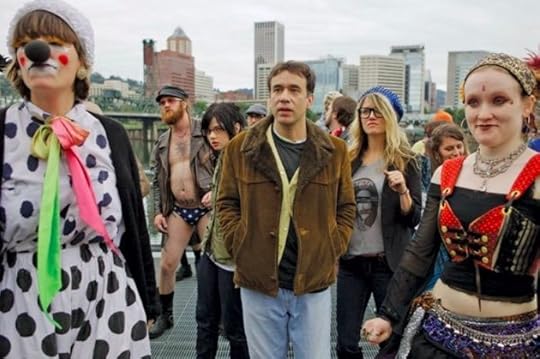
Photo: IFC
No show has sent up a city better than this offbeat sketch comedy show, which pokes fun at Portland. Classic sketches include an entire tent city based around a brunch line, a couple traveling from their lunch spot to a farm to see how humanely their chicken was raised, a feminist bookstore, an eccentric mayor, and pretty much all the city’s quirks taken to an extreme. Most characters are played by comedian Fred Armisen and Carrie Brownstein, though guest stars have ranged from Jack White to Roseanne Barr. It’s another in the long line of Lorne Michaels’ sketch comedy masterpieces, and probably his most ambitious.
Pennsylvania
It’s Always Sunny in Philadelphia
FX, 2005-present
Proving once again that the more people you offend, the more you can get away with, this series set in a Philadelphia dive bar — run by the worst people you’ve ever met — brings almost weekly plotlines of the incomprehensibly awful. Marketing the bar to teenagers? Check. Dressing up as cops to rob people? Absolutely. Breaking a former preacher and selling him to the mob doesn’t even seem so bad when you remember The Gang burnt all their enemies alive on Thanksgiving. And you know what? It’s never not funny. Though a couple seasons in the middle had us thinking the show had jumped the proverbial shark, its recent episodes have firmly redeemed it as the best show ever set in Pennsylvania.
Rhode Island
Family Guy
Fox, 1999-present
The humor on Family Guy runs a bigger gamut than perhaps any show in history, switching between obvious fart jokes and references to William Faulkner sometimes in consecutive cutaways. That style of cutaway humor has introduced younger audiences to pop culture of the ‘70s and ‘80s but also earned the show its critics for forging the humor from irrelevant jokes. No matter your views, Family Guy has been a cultural staple for 20 years, combining unique characters like a pseudo-intellectual talking dog, a devious talking baby, and a blue-collar New England loudmouth dad for the best animated ensemble cast of all time.
South Carolina
Vice Principals
HBO, 2016-2017
When we heard the creators of Eastbound and Down were making an entire show about ineffective high school vice principals in the south, we knew it would be comic gold. Danny McBride — who played Kenny Powers — co-created and starred in this show, which chronicles two unlikable and devious vice principals as they attempt to take down their newly appointed principal, Dr. Belinda Brown. For a year they develop often-despicable schemes to get her fired, ending in everything from injury to personal embarrassment. Vice Principals gave us some of the best characters on television for a couple of seasons, but as it had only been planned to run for 18 episodes, it was brilliant yet brief.
South Dakota
Deadwood
HBO, 2014-2016
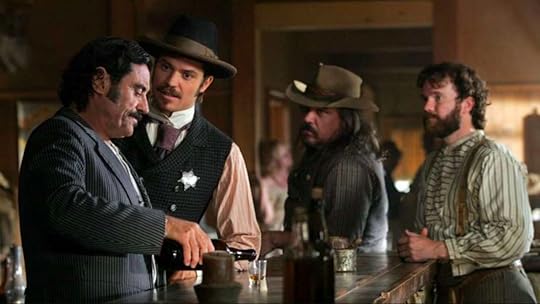
Photo: HBO
This western drama might have been the best underwatched show of all time, a masterfully acted piece of historical fiction based on real diaries from Deadwood settlers in the 1870s. The show saw a revolving saloon door of dead celebrity guest stars, from Wyatt Earp to Wild Bill Hickock to Calamity Jane. In two seasons Deadwood racked up 28 Emmy nominations and eight wins including Best Directing for Walter Hill. Though it only lasted two seasons, it grew great critical acclaim and birthed a massive tourism interest in the real-life town set in South Dakota’s Black Hills.
Tennessee
Nashville
ABC/CMT, 2012-2018
The sad, cyclical, unscrupulous world of the music business was laid bare in this series that followed country music musicians as their careers fell, rose, and fell again. The story begins with aging legend Rayna James butting heads with up-can-coming star Juliette Barnes, who feud over more than their predictable difference in styles. James fades away after a few seasons leaving Barnes on top, who eventually begins to see her career take a dive as a new up-and-comer takes her place. It wasn’t the deepest writing on the planet, and it didn’t rack up too many awards. But for pure evening soap opera entertainment, it was fun to watch.
Texas
King of the Hill
Fox, 1997-2010
Beavis and Butthead creator Mike Judge wanted to do more to chronicle the hot, stagnant feel of life in a midsized Texas city than showcase a couple of bumbling teenage metalheads. So he gave us Hank Hill, a caricature of a conservative Texas dad. Hank and his family live in the fictional town of Arlen, where football and barbecue are kings, and the good, honest work of a propane salesman is enough to get by. His neighbors and family are all quintessentially Texas, whether it’s the mumbling playboy Boomhauer or the Laotian family next door. Even if you’re not from the Lone Star State, you can still appreciate the nuances that make this the most Texas show of all time.
Utah
Big Love
HBO, 2006-2011
Just so we’re clear, the Mormon church ended the practice of polygamy in 1890. Does that stop people from making jokes or, in this case, an entire five-season TV shows about it? Absolutely not. Which is part of why Big Love was such an instant hit when it debuted right after The Sopranos in 2006. The show follows fundamentalist Mormon Bill Henrickson and his three wives as they try and conceal their alternative (and illegal) lifestyle in a Salt Lake City suburb. Of course, they’re outed early on and get into a number of ventures from running a casino to running for public office. It holds a lot more suspense than you’d expect from a show about people who don’t drink, earning itself an Emmy nomination for Outstanding Drama Series.
Vermont
Newhart
NBC, 1982-1990

Photo: NBC
Bob Newhart might have been the best stand-up comedian of the 1950s and 1960s, but by the time the ‘80s rolled around, few younger people knew who he was. Until this show about a couple running a small inn in rural Vermont. The show was full of Newhart’s deadpan, facial-expression hilarity and quirky characters (including the famous Daryl brothers). But it might be the only show known more for its finale than its body of work, ending with Newhart waking up in his old Bob Newhart Show in bed with his wife Emily, purporting the whole run of Newhart had been a dream emanating from the previous series.
Virginia
Criminal Minds
CBS, 2005-present
Birthed in the heyday of the forensic procedural drama, Criminal Minds took the crime-investigation-solution formula and made it juuuust a little creepier. Where most shows either had victims who were already dead, or sometimes saved, the poor people kidnapped at the beginning of an episode of Criminal Minds rarely made it to the end, usually suffering some demented, sadistic fate that we all got to witness on TV. What we’re saying is, don’t watch this show before bed. But do watch it if you’re a fan of psychological dramas that sometimes don’t have happy endings.
Washington
Twin Peaks
ABC, 1990-1991
For nearly a year, the question on the lips of every TV-watching American was “Who killed Laura Palmer.” It was the “Who shot JR?” of its day, and had social media existed in 1990, it would have been all you saw in your feeds. The David Lynch series was quintessentially creepy, borrowing on bizarre, northwest characters; a gloomy backdrop; and a little bit of the supernatural to tell the story of FBI Special Agent Dale Cooper investigating Palmer’s murder. Of course, the inherent problem with a show based on a murder is once it’s solved, people lose interest. So despite the shows eccentric draw once Laura’s murder was solved — rather unsatisfyingly — ratings took a dive, and its eventual reboot received mixed reviews.
Washington, DC
The West Wing
NBC, 1999-2006
If you had asked us in 2013, hands down we would have said House of Cards, one of the OG Netflix series that showcased a despicable, yet probably accurate, depiction of the underhanded, unscrupulous politics of Washington through the eyes of murderous president Frank Underwood and his equally devious wife (and eventual president) Claire. But even before Kevin Spacey’s fall from grace after sexual assault charges and subsequent removal from the show’s final season, House of Cards never really lived up to its game-changing first season. What does stand the test of time is Aaron Sorkin’s myopic, feel-good and fast-paced presidential fantasy, The West Wing.
Martin Sheen’s President Josiah Bartlett became every wide-eyed Democrat’s dream leader (remember, this show aired primarily during the George W. Bush years and had to indirectly touch on the events of 9/11), and his press secretary CJ Cregg launched Allison Janney into icon status (she won four Emmys for the role). Sure, the The West Wing was basically liberal porn and everyone was unrealistically quick-witted, but it was educational for many, had one of the most likeable ensemble casts, and gifted television with the trademark “walk and talk.”
West Virginia
Outcast
Cinemax, 2016-2018

Photo: Cinemax
Leave it to West Virginia to have its best show air on a network known for late-night, soft-core adult features. Outcast, however, was not about skin at all, rather a live adaptation of a comic book series of the same name. The plot revolves around the town of Rome, West Virginia, where demonic possession seems to be abnormally high. The protagonist, Kyle Barnes, has fought possession himself and helps locals who are suffering the same curse. Despite pretty solid critical acclaim, it apparently lacked the elements a Cinemax program needs for success and only lasted two seasons.
Wisconsin
Picket Fences
CBS, 1992-1996
Though the lovably funny Happy Days and That ‘70s Show were far more successful and launched far more careers, the four seasons of Picket Fences were some of the best network television ever created. In Tom Skerritt’s most notable role since Viper, he plays Rome, Wisconsin Sheriff Jimmy Brock, who presides over a small town where bizarre, socially provocative crimes happen nearly every week. Though Picket Fences always drew a little on the supernatural, it was at its best when it handled sensitive issues like gay adoption and transgendered people. A career-killing Friday night time slot made this a perpetual ratings dog, but its 14 Emmy awards — including two for Outstanding Drama Series — kept it on the air for most of the mid-’90s.
Wyoming
Longmire
A&E, 2012-2017
The revival of the Western television show is long overdue, but this solid A&E drama set in northeast Wyoming was a good start. It follows the classically brooding Sheriff Walt Longmire, who presides over Absaroka County with a cowboy hat and a shotgun like it was 1890. The recently widowed sheriff is quiet and strong, revealing later he may or may not have killed his wife’s murderer with help from his Cheyenne Indian pal Henry, played by Lou Diamond Phillips. Longmire was filled with sweeping shots of the vast land of Wyoming, and for a brief stint this decade, it reminded us why we fell in love with westerns 50 years ago. 

More like this: The best song about all 50 states
The post The best TV show set in every state appeared first on Matador Network.

Best things to do in Columbus, Ohio

Cities on the coasts like San Francisco and New York City offer a cultured vibe that’s hard to match. But with the astronomical cost of living and ultra-competitive housing markets, simply surviving in a trendy urban center is increasingly difficult to afford. People looking for an innovative and entertaining place to live that won’t empty your bank account shouldn’t pigeonhole themselves along the Atlantic or Pacific, though. They should instead be looking toward the Midwest. More specifically, they should be looking to Columbus, Ohio.
As people and businesses branch out from coastal hubs, and as remote work edges ever further into the mainstream, the Buckeye State is becoming a destination for young creatives and people wanting to forge their own path. From retro barbershops and a thriving fashion industry to tasty eats and craft beer, Columbus is one city in the Midwest you shouldn’t fly over.
Columbus is among the fastest-growing cities in America.

Photo: aceshot1/Shutterstock
The population of Columbus is rapidly approaching 900,000 residents. Columbus is the eighth fastest-growing city in the US in terms of percentage increase in population and the only city in the Midwest to make the top 15. Ohio’s capital, known by locals as C-bus and nicknamed the Biggest Small Town in America, is frequently ranked among the best big cities to live in, and Fast Company even dubbed it the “city of the future.” Young people move to Columbus to start their adult lives at Ohio State University, and many stay after graduation because they’ve fallen in love with the city’s vibe and the wide array of cultural offerings.
The restaurants are trendy without trying.

Photo: Kiian Oksana/Shutterstock
The city’s true appeal lies in its ability to shine even without the spotlight. Take brunch, for example. Portland residents like to brag about its brunch superiority, but the brunch scene in Columbus is equally on-point. Plus you can have a quality dining experience without emptying your wallet or waiting in line for two hours to get a table. Whether you’re running out in your yoga pants for a quick bite or clinking glasses of mimosas with your crew, there’s no shortage of tasty joints in C-bus. Check out Skillet for a farm-fresh brunch that will rock your world, with menus changing based on the season and what the kitchen hauls in from nearby farms. The Cloud Nine Pancakes at Northstar Cafe will put you on, well, you get the idea. Fox in the Snow also serves up breakfast sandwiches and pastries worthy of the ‘Gram, and for a truly outstanding Bloody Mary to accompany your chicken and waffles drenched in blueberry sauce, don’t miss The Pearl.
When you’re in need of some late-night grub, head to Dirty Franks where the hot dog toppings range from baked beans and crushed-up potato chips to sweet corn and jalapenos. Keep your eats customizable at Condado Tacos where they stuff just about anything you could want into a tortilla. If you think you’re up to the challenge, order the Thurmanator at The Thurman Cafe. Man Vs. Food couldn’t resist this monstrous burger with its two 12-ounce patties.
The Columbus art scene has it all.

Photo: Columbus Museum of Art/Facebook
Nicknamed the Indie Arts Capital of the World, Columbus embraces a variety of artists and styles. Visit the Columbus Museum of Art for Think Like an Artist Thursdays. You’ll get the chance to interact with local artists while enjoying live music and cocktails and maybe even make some art of your own. Even if you’re not in town on a Thursday, this museum is still worth a visit to see its late-19th-century and early-20th-century collection of American and European modern works of art. Of particular interest is the museum’s Pizzuti Collection, which hosts global exhibitions and events showcasing everything from sculpture to photography to film, all with the goal of presenting diverse perspectives and talents that keep each visit fresh and exciting.
Also worth a visit is the acclaimed Wexner Center, an arts center set up as a sort of interactive, experiential lab on Ohio State University’s campus. The Wex, as it’s called, also hosts international exhibits and isn’t afraid to think outside the box when it comes to programming. The idea is to invite visitors to dive into the art and see how it strikes them, not just stand there gaping with a camera in their hand. Beyond the museums, you can take part in the Gallery Hop and explore the many art showrooms in the Short North Arts District on the first Saturday of the month.
Columbus is on the cutting edge of technological innovation.

Photo: Smart Columbus/Facebook
Columbus prides itself on being an innovative city. Take, for example, Smart Circuit, a driverless shuttle program that debuted in December 2018. Currently open to the public, there are six shuttles traveling to four stops along the Scioto Mile in the heart of downtown Columbus. This public space features parks, bike paths, and pedestrian walkways as well as sculptures, fountains, and a free outdoor climbing wall, and you can get to it all in an autonomous car. The shuttle route connects important destinations along the city’s riverfront, including the Center of Science and Industry and the National Veterans Memorial and Museum. In the shuttles themselves, riders face one another in campfire-style seating, making it a great place to find out what’s happening in town as its quite easy to strike up a conversation with another tourist or local.
Creative businesses are everywhere.

Photo: aceshot1/Shutterstock
Back to the whole “shining without the spotlight” thing, the city’s artists make a strong case for Columbus as one of the most creative places in the country. For you as a visitor, this makes it the ideal destination to exercise your own imagination as you find both inspiration and instruction in the inclusive artisan community. The Columbus Idea Foundry, located right downtown, offers classes in everything from blacksmithing and leatherworking to beginner podcasting. A trip here is among the most unique date ideas anywhere in the Midwest, and Land Grant Brewing Company is just a skip away for a post-session libation. Literary-artist types should substitute the idea factory with a trip to NatterDoodle to learn Etsy-esque hand-lettering from a pro named Natalie with the angle of empowering women through creativity and “sprinkled positivity.”
You can also kick those kitchen skills up a notch on a trip to Columbus. 1400 Food Lab offers cooking classes for every level. Writer types will feel at home at Thurber House, a literary center honoring the author of The Secret Life of Walter Mitty that offers writing workshops and special evenings with authors from near and far. To check out an author’s work before you hear them speak, stop in The Book Loft in German Village. This 32-room, pre-Civil War building once housed a general store, saloon, and cinema. Today, it’s one of the country’s largest independent bookstores.
The street art is worth a visit on its own.
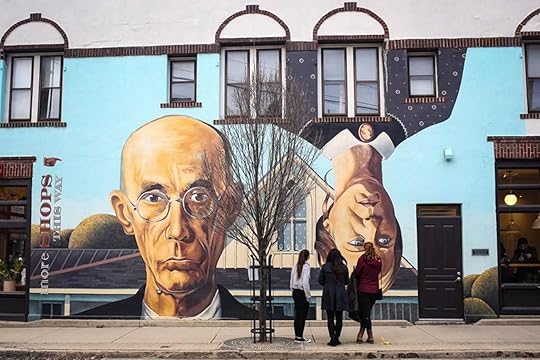
Photo: Short North Arts District/Facebook
To really see Columbus, you need to approach the Gates of Hell. That’s right — the gates to hell have been hidden underneath North High Street all this time, discovered only by a handful of wayward graffiti artists. Okay, so maybe it’s not actually the gates of hell, but the city’s most famous drainage tunnel gets tagged with some pretty impressive graffiti. For more street art in less spooky locales, check out the giant murals situated around the heart of Columbus. At the intersection of North High Street and East Lincoln Street, you’ll find a C-bus rendition of Grant Wood’s American Gothic. Then make your way to North Pearl Street and Warren Street for a Mona Lisa that dwarfs the one hanging in the Louvre — and won’t have a crowd of tourists obstructing your view.
Buckeyes brew great beer.

Photo: Pretentious Barrel House/Facebook
With everything there is to see and do in Columbus, a day exploring the city is sure to work up a thirst. Fortunately, there’s no shortage of spots to drink in Columbus, including a full-on beer hotel with shower beers and in-room taps. The city has a long history with beer. German immigrant Louis Hoster opened the first brewery here in 1836 in the area now known as the Brewery District. Craft beer nerds should head straight here, though you can find craft beer throughout Columbus.
For a diverse taste of what the city’s brewers are creating, start with a pint at Land Grant then head to Hoof Hearted Brewery and Kitchen for a Max Profitz Sour IPA. The next stop should be Pretentious Barrel House for a pint of their reincarnated signature, the Truculent blonde. Finally, get heavy with a Scottish Ale or Russian Imperial Stout at Barley’s Brewing. For great beer outside of a brewery, pop into Bob’s Bar. Self-proclaimed as “The Cultural Hub of the Midwest,” this beloved C-bus dive bar has more than 200 beers to choose from.
Columbus also has a thriving craft cocktail scene encouraged by local distilleries like Watershed Distillery on Chesapeake Avenue and Middle West Spirits on Courtland. Not only can you get a fantastic cocktail at Two Truths, but it’s also a great spot to see live music. Sip an ace boon sazeracoon while rocking out to an animated jazz quartet. 

More like this: The world’s first beer hotel, with shower beers and in-room taps, is finally opening
The post It’s time to treat Columbus, Ohio, like the cultural center it is appeared first on Matador Network.

Camino de Santiago walking tips

Spain’s famous 500-mile pilgrimage trail, the Camino de Santiago, has become one of the most popular hiking vacations in Europe. In medieval times, pilgrims from throughout Europe set out to the city now called Santiago de Compostela to see the alleged remains of the apostle James. Today, people walk the Camino for all sorts of reasons, and in 2017, over 300,000 people laced up their boots and gave the Camino a try.
If you’re thinking of joining their ranks, you’ll find plenty of books describing the Camino’s history and authors’ personal journeys on the trail. While useful inspiration, these books often leave out the basics. So, here are 15 practical tips you will want to know before you start walking.
1. There’s more than one way to Santiago.

Photo: Martin Schuetz/Shutterstock
When people talk about the Camino, they’re usually referring to the Camino Frances, the French Way. Stretching from the French border, over the Pyrenees, across Quixote’s windy plains, and ending in the soggy, green hills of Galicia, the French Way is by far the most popular route to Santiago — but it’s not the only one.
The second most popular path is the Camino Portuguese, running north from Lisbon or Porto. In Spain, the Camino del Norte runs along the north coast of Spain in Basque Country; the Primitivo, the original Camino route, runs farther north than the Camino Frances since much of Spain was under Moorish control when it was established hundreds of years ago; and the Via de la Plata from southern Spain is the longest of the routes. All of these paths attract pilgrims looking for a different experience. Whether you’re looking for beach views, a more strenuous hike, or solitude, one of these paths might suit you better than the popular Camino Frances.
2. You don’t have to be a hardcore hiker.

Photo: Gregorioa/Shutterstock
The French Way holds a few strenuous climbs and a couple of long stretches without services, but reasonably fit people should have no major trouble. You don’t need any technical hiking skills or superhuman endurance. It’s even possible to book relatively comfortable, and inexpensive, hotels along the way or use a baggage forwarding service like the one offered through the Spanish Postal Service to forward your bags from place to place. You can walk your own way.
3. You can leave the camping gear at home.
The Camino is not the Appalachian Trail or PCT; you don’t have to be self-sustaining. If anything, it would probably prove more of a hassle finding a place to camp than paying for one of the cheap pilgrim accommodations. Proof of this can be found on the “free table” in Roncesvalles, the typical first-night location on the Camino Frances. Pilgrims who made the mistake of hauling camping gear over the Pyrenees dump the extra weight at the table once they realize they’re unlikely to use it, leaving a mini-REI for people to scavenge over.
4. Guides are unnecessary (unless you want one).
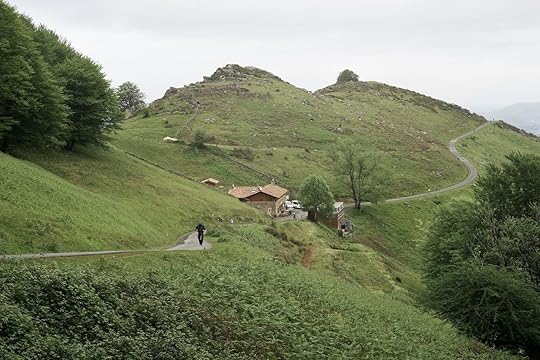
Photo: Benedictus/Shutterstock
People have been walking the Camino for a thousand years. The trail is well established and well marked. If you’re considering a guide to ensure you don’t find yourself lost and stranded in the middle of nowhere, don’t. There are, in fact, a few alternate routes that arrive at the same destination, and nowadays, there’s an app for the Camino Frances with a map to assure you that you aren’t lost. But if you want to see the Camino through an expert lense or don’t want to worry about accommodation, then maybe a guide is for you.
5. The Camino feels different throughout the year.

Photo: Gena Melendra/Shutterstock
Weather is a factor, but it’s possible to walk the French Way year-round. Give more consideration to the crowds. In August, for example, many Spanish families walk sections of the Camino during their kids’ school vacations, and the path takes on a family holiday vibe. Whereas in May and June, the crowd is more international, and in the winter months, the path attracts serious walkers.
6. The Camino has its own lingo.
Buen Camino: catchall pilgrim greeting that can be used as “hello” or as an alert that you’re passing someone
Albergue: hostel-like accommodation exclusively for pilgrims
Parroquia: a church-run albergue, some offer mass or a blessing
Municipal: a city-run albergue, often the cheapest and most basic option
Privado: a privately run albergue, spanning the gamut of luxury and price
Hospitalero/a: the person running the albergue
7. Your guidebook doesn’t control your Camino.
Most guidebooks recommend stopping in the bigger towns because there are more albergues and services, but if you go just a little “off-book” you can find amazing little villages. These stops will likely only have a tavern or two to entertain you, but with a good group of pilgrims, that’s plenty.
8. Feet are unique.
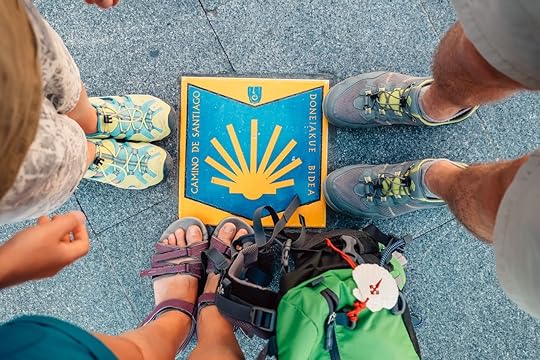
Photo: Solovyov Vadym/Shutterstock
Nothing brings pilgrims together like a conversation about feet. Knowing your own feet before you start walking to Santiago will help avoid trip-ending injuries. This starts with finding the right shoes (boots vs. sneakers, waterproof vs. breathable, loose vs. tight) and often ends with finding the right blister solution.
Moleskin will help prevent blisters if you’re getting hotspots because your feet are dry and rubbing against your socks, but if you’re getting hotspots because you have sweaty feet and the moisture is rubbing against your socks, the moleskin will peel off in your shoe. Having a pair of hiking sandals to give your battered feet another option is often a good idea — although not if you have weak ankles. Feet are very personal, so figure yours out ahead of time.
9. Walking sticks help.

Photo: bepsy/Shutterstock
If used properly, walking sticks can take 20 percent of your weight off your knees. On the climbs, that 20 percent could be the difference between loving the simplicity of backpack life and wanting to throw your pack from the nearest bridge.
10. The last 100 kilometers (60 miles) are different.
To earn a Compostela, a Latin document declaring the completion of your pilgrimage, you only need to walk the last 100 kilometers, or 60 miles. So, in the town of Sarria, 112 kilometers (70 miles) away from Santiago, the number of pilgrims jumps dramatically. In the summer months, you should consider calling ahead to book a bed in a private albergue in Sarria and the following towns. You should also prepare for more of a party atmosphere and large groups of Spanish school kids on the trail.
11. You must collect your stamps.

Photo: Sergio Rodriguez_photo/Shutterstock
To prove they’ve walked as far as they claim, pilgrims collect stamps at each albergue in a “pilgrim’s passport” (which can be purchased for a euro in most towns on the way). Along most of the trail, one stamp at each place you sleep is enough to prove your pilgrim status, but the Pilgrim’s Office in Santiago recommends getting two or three along the final 100 kilometers. This makes it more difficult to “fake” a Camino just to get the Compostela.
12. The Cathedral gets busy.

Photo: Natursports/Shutterstock
You need to line up early to get a seat for Pilgrim’s Mass at the cathedral in Santiago. For security reasons, you can’t take your backpack in, but you can store them for a couple of euros at the Pilgrim House Welcome Center. Note that the cathedral is being restored in preparation for 2021 Holy Year Celebrations, so sections might be closed off. The Camino Forum is a wealth of information on the Camino in general and a good place to look for closure updates.
13. You can have a box waiting for you.
After four or five weeks of walking and hand washing, you might want to change your clothes in Santiago. Shipping a box ahead is a good way to resupply, especially if you’re continuing to travel. There are a couple of ways to do this.
The Spanish Postal Service, as noted above, can not only forward your bags from place to place but also hold general delivery boxes in Santiago. They say they only hold them for two weeks, but they’re known to be sympathetic to slow-moving pilgrims. Bringing extra gear to Spain and then shipping it to Santiago is the cheapest option.
A pricier but more convenient option is to ship a box to Ivar Rekve, a longtime champion of the Camino. He will hold your box for 60 days at a storage area near the cathedral and even deliver it to your hotel or hostel when you arrive.
14. Santiago doesn’t have to be the end.

Photo: faber1893/Shutterstock
Most people finish their Camino in Santiago, but you can walk another 90 kilometers, or 56 miles, to the lighthouses in the coastal towns of Finisterre and Muxia. Usually done in three days, the added walk gives pilgrims a bit more time to think about their experience, and watching the sunset over the Atlantic is a spectacular way to end the journey.
15. The Camino is addictive.

Photo: 4uphoto_Valeria De Mattei/Shutterstock
No one walks the same Camino. You can train for the long walking days and scale down your backpack weight, but the Camino will still deliver surprises. You’ll get a week of rain that throws a kink in your detailed schedule or you’ll find your pack filled with bottles of wine for a communal picnic. These tips will get you started, but you really have to just let the Camino happen.
No matter your what shape your journey takes, you’ll find the pull hard to describe. Many former pilgrims find themselves going back for a second, third, even 10th Camino! Don’t be surprised if you find yourself aching for more after the blisters have healed. If you want to stay connected to the Camino at home, you can join a local Camino group. In the United States, The American Pilgrims on the Camino hosts chapters all over the country. Buen Camino. 

More like this: What I learned walking 500 miles on the Camino de Santiago
The post 15 things you need to know before walking the Camino de Santiago appeared first on Matador Network.

Cross-country, 4,000-mile bike trail

If you like the idea of a road trip across the US, but the prospect of spending days on end in a car makes you sick, a leg-powered, cross-country trip could be the solution. The Rails-to-Trails Conservancy (RTC) recently announced the Great American Rail-Trail, a 4,000-mile bike trail that will connect the East and West coasts via 12 states.
The Great American Rail-Trail will begin in Washington, DC, and end in Washington state, span nearly 4,000-miles, and link together several smaller gateway trails, like Capital Crescent Trail, Chesapeake & Ohio Canal National Historical Park, Panhandle Trail, Hennepin Canal State Trail, Casper Rail Trail, and Palouse to Cascades State Park Trail.
View this post on Instagram
A post shared by Rails-to-Trails Conservancy (@railstotrails) on Jan 23, 2019 at 11:36am PST
Keith Laughlin, president of the RTS, said in a press release that “the investment of time and resources necessary to complete this trail will be returned many times over as it takes its place among the country’s national treasures. As we embark on the journey to complete the Great American Rail-Trail, we embark on the single greatest trail project in the history of the US.”
The goal of the trail is to offer a seamless, continuous path, separated from from vehicle traffic, for bikers and hikers, and a truly memorable way of exploring the US. Currently only 50 percent of the trail is complete, though the RTC plans to release full route details by spring 2019. More information can be found on the Rails-to-Trails Conservancy website. 
H/T: Travel & Leisure

More like this: The 7 most epic bike tours around the world
The post Bike your way across the US on this epic 4,000-mile seamless trail appeared first on Matador Network.

The best things to do in Frankfurt

Frankfurt has a small image problem. When you think about the other major German cities, certain images come to mind. Berlin has the art and edgy vibe. Hamburg has the parties. Munich has the beer and the pretty buildings. The stereotypical image of Frankfurt isn’t so exciting. In fact, most people probably associate it with big banks and airline transfers. Plus sausages, too.
Those people are missing out. While there is some truth to these stereotypes, Frankfurt has so much more to offer. The city has existed for well over 1,000 years and it’s pretty much the exact geographic center of Europe. A city with those credentials couldn’t possibly be the stuffy financial center of popular misconceptions. Here’s why Frankfurt is the most underrated city in Germany.
You’ll find urban cool in the Bahnhofsviertel.
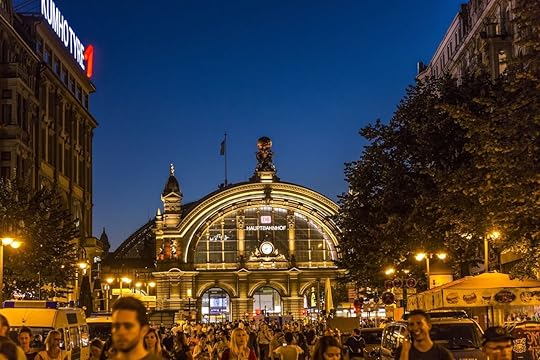
Photo: travelview/Shutterstock
Named after Frankfurt’s main train station, the Bahnhofsviertel district is a stark contrast to the glass and steel of the city’s financial center. Historically, this had been a fairly deprived neighborhood, as well the home to the city’s red light district since just after World War II.
While some seedy elements remain, the area is perfectly safe. These days the cheap rents have helped to turn Bahnhofsviertel into the city’s youngest and trendiest neighborhood. Think craft beer, artisan coffee, and vegan joints and you’ll be on the right track. Don’t miss Plank if you want a flavor of the unique Bahnhofsviertel vibe.
Bahnhofsviertel is also a reflection of Frankfurt’s status as one of the most international cities there is. On Tuesdays and Thursdays, the nearby Kaiserstrasse Wochenmarkt serves a mixture of German and international cuisines, as well as fresh produces, bread, and even local wines. On the same street, you’ll find Kaiserpassage, a 1970s thoroughfare turned international bazaar. In this arcade, goods are sold from the Far East and Global South, and is home to tailors, hairdressers, and spice merchants. If you like the smell of incense, this is the place for you.
You can get out into nature.
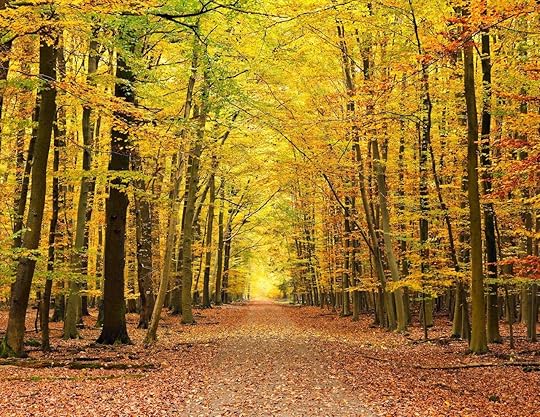
Photo: S.Borisov/Shutterstock
Frankfurt is situated on the Main River. This provides a fantastic opportunity for the city’s residents and visitors to get out and relax away from the noise of the city. While this can be done on a small canoe or dinghy, if you want a more luxurious experience, you should rent a slightly larger and better appointed boat from Italian Flair.
Right outside the city, you’ll also find Frankfurt’s municipal woods, the largest forest in all of Germany. It includes a nearly 40-mile path for walking and cycling, which encircles the entire city. There’s also a range of different hiking routes to suit all abilities and timescales.
If you have a little bit less time on your hands, Frankfurt is also one of the greenest cities in Europe, with over 40 dedicated parkland areas. The best of these is Bethmannpark, with its famous Chinese walled garden. This is the perfect spot either for a bit of quiet meditation or a sneaky Instagram opportunity.
Cheese comes with a sense of humor.

Photo: picturepartners/Shutterstock
One of Frankfurt’s most established delicacies is handkäse mit musik. That’s “hand cheese with music,” if you’re German isn’t up to scratch. The hand cheese part isn’t so difficult to explain. The sour cream-based cheeseballs are just small enough to fit in the palm of your hand.
The music, so they say, comes later. The dish is topped with a raw onion marmalade, which supposedly leads to flatulence after eating — there’s that famous German humor. Still, this delicacy is not to be missed. If nothing else, it’s a wonderful accompaniment to the local apfelwein, but more on that later.
The architecture is pretty cool.

Photo: Augustin Lazaroiu/Shutterstock
Frankfurt’s concrete and steel skyscrapers have led to it being affectionately referred to as Mainhatten, after it’s place on the Main. But not many of us go on holiday to stare up at gigantic glass protrusions. Still, they offer a nice counterpoint to the city’s many historical buildings.
The city’s most famous building is undoubtedly the Römer, the historical city hall which has stood on the same spot since the 1400s. It’s also the centerpiece of Frankfurt’s “new” old town, which is called such because around 90 percent of the area had to be rebuilt in the post-War era.
For something a little bit more contemporary, but with no less soul or character, special mention has to be given to the Tropicarium in the Palmengarten, Frankfurt’s botanical gardens. In an odd sort of way, it’s a bit like a giant glass flower filled with flowers. The rest of the gardens are the perfect location for relaxation if the bustle of Frankfurt gets to be too much for you.
The city has some serious culture.
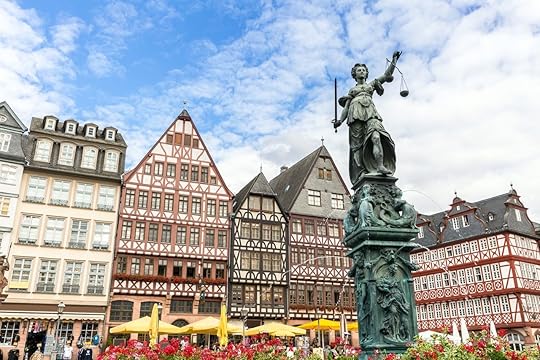
Photo: vichie81/Shutterstock
Frankfurt is also home to some seriously high-brow culture. This includes the birthplace of the city’s most famous son, the writer Johann Wolfgang von Goethe. Decorated in authentic 18th century furniture, the Goethe House tells the story of the environment which bore Germany’s most celebrated author.
No cultural tour of Frankfurt is complete without a visit to Alte Oper Frankfurt. This opera house was completed in 1880, in time to play host to premieres of works by Richard Wagner. However, it was almost completely destroyed during the war. In fact, until the late 1970s, the building was known as Germany’s most beautiful ruin. Today, guided tours are available, but the best way to enjoy this unique space is to attend one of over 450 annual events.
For something a little bit cruder, make your way to Oberschweinstiegschneise, where you’ll find a novel public artwork. Fed up with being urinated on for over 300 years, one of Frankfurt’s trees decided to get back at passersby. This is part of Frankfurt’s comic art initiative, and when you go home you can tell all your friends you’ve been peed on by a tree.
It’s the center of the world.
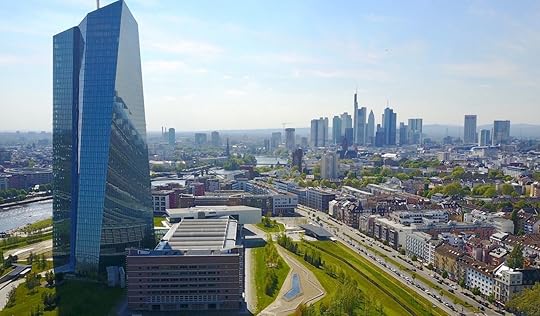
Photo: 360degreeAerial/Shutterstock
There’s a strong case to be made that Frankfurt is the center of the world, at least figuratively. All the same, its status as an international city means that there are expat communities from just about every nation on the earth.
Two things come with that. The first is food. You want it, Frankfurt has it. Highlights include late night Vietnamese street food from Sapores, as well as traditional Eritrean delights at African Queen. The other is international performances. Nobody does this better than the Frankfurt International Theatre, which every year hosts hundreds of concerts, plays, and performances from all over the world. They even stage a multitude of foreign language dramas, for all you linguists out there.
It’s joyful around Christmas.

Photo: S.Borisov/Shutterstock
Every year, Frankfurt’s old town is transformed into one of Europe’s largest Christmas markets. The juxtaposition of the centuries old buildings with extensive Christmas lighting decorations will soften even the grinchiest of hearts.
Since way back in 1393, the market has provided festive joy to Frankfurters and foreigners alike. You’ll find all the traditional trappings, including Frankfurt’s eponymous sausages as well as ample choice of gluhwein.
Just make sure you wrap up tight. Despite being relatively far south and nowhere near the coast, Frankfurt winters can be fairly unforgiving.
You can drink apple wine.

Photo: Africa Studio/Shutterstock
The rest of Germany is known for beer, but in Frankfurt cider is king. The locals call it apfelwein, or apple wine, and drink it from peculiar angular glasses which reflect the light as you drink. While it’s a strange look, you’ll be thankful for the extra grip when you’ve had a couple.
Apfelwein is available in most bars and restaurants, but it’s best enjoyed in one of the city’s many dedicated cider taverns. In particular, check out Solzer, which has been serving apfelwein and accompanying traditional dishes since 1893.
In the winter months, you need to get yourself a hot apfelwein, served with lemon and cinnamon. Its distinctive warming qualities will be more than enough to sustain you through a full day of sightseeing in even the worst German winter.
You can get some retail therapy.
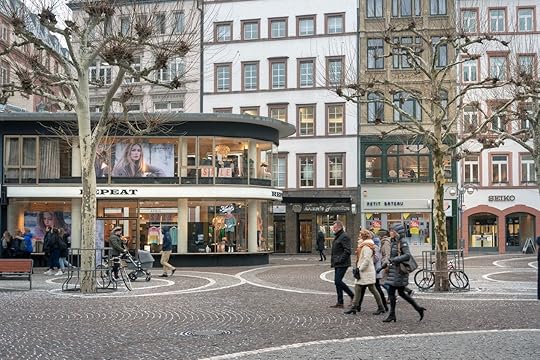
Photo: ilolab/Shutterstock
Many of Frankfurt’s residents are employed in the financial sector. Because of this, a lot of the city’s shops are geared towards expensive tastes. Head over to Goethestrasse and you’ll find famous names like Versace and Louis Vuitton. Even if you’re not going to drop thousands on a belt, you’ll get a kick out of pretending.
For slightly more modest tastes, Brückenstrasse is home to a wide array of local, independent boutiques and showrooms. From timeless minimalism to the downright wacky, you’re sure to finds something to suit your own unique style.
If fashion isn’t your bag, Frankfurt Flea Market has you covered. Every two weeks, bargain hunters and antique dealers alike descend on the banks of the Main to trade goods. Even if you’re not out to find a long lost Rembrandt, you’d be hard pressed to find a more enjoyable walk in town.
It’s the real deal.

Photo: Syda Productions/Shutterstock
Perhaps the best thing Frankfurt has to offer compared to other German cities is that it’s relatively untouched by tourism. Unlike the other major cities, there’s relatively little chance of running in to a massive group of people from your own country, like you would on Hamburg’s Reeperbahn or queuing up outside Berghain in Berlin.
In fact, not many cities have hung on to their authenticity as well as Frankfurt. Sure, there are tourists, and plenty of expats too. But still, if it’s an authentic German experience you’re after, Frankfurt will never disappoint. After all, it’s pretty much been at the center of German culture for over 1,000 years, so it’s unlikely to change too much anytime soon. 

More like this: The 8 coolest places in Sweden worth visiting outside of Stockholm
The post Why Frankfurt is the most underrated city in Germany appeared first on Matador Network.

Site of Caesar’s murder will open
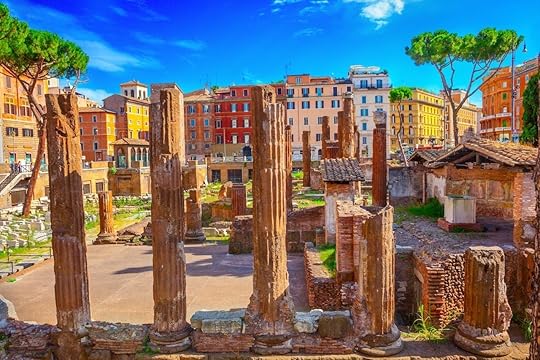
Visitors to Rome are about to be able to add a pretty iconic stop on their next tour of the city. Last week Rome’s mayor, Virginia Raggi, announced the restoration and opening of the Largo di Torre Argentina — the site where Julius Caesar was stabbed 22 times to death by rival Roman senators on March 15, 44 BC. The remains of the complex that includes the Theater of Pompey, the Senate House, and four temples, were first excavated back in the 1920s by Benito Mussolini. Since then, however, the archaeological site has largely been ignored and off-limits — to human visitors, anyway. One temple in the complex currently serves as a cat sanctuary.
In detailing plans for the site’s opening, the mayor also revealed that the area will be fully accessible to all, with walkways, nighttime lighting, and even a museum. She also assured cat-lovers that the renovations will not disrupt the cat sanctuary, currently housed in Temple D — one of the complex’s four temples.
The renovation will cost around $907,000, and is being funded by fashion house Bulgari. Jean-Christophe Babin, Bulgari CEO, told reporters that “Rome is always the main source of inspiration for Bulgari. This site has an extraordinary value because it’s the oldest open-air spot in Rome.”
Largo di Torre Argentina is projected to be open to the public by the second half of 2021. 
H/T: The Points Guy

More like this: How to save money on your trip to Rome
The post The site of Julius Caesar’s murder will soon open to tourists appeared first on Matador Network.

Native American sites to visit
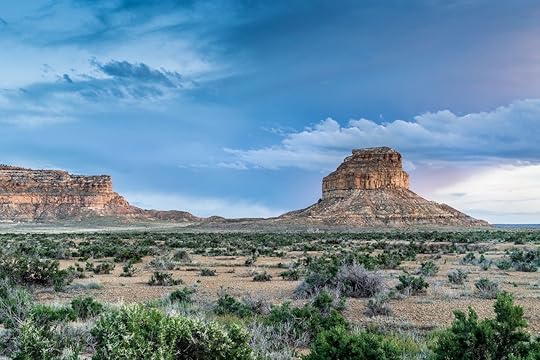
Sites of Native American heritage play a powerful role in educating visitors about the original residents of what are now the United States and help foster respect for the 5.2 million indigenous people in the country today. Socially ethical tourism helps sustain Native American families — some of the least represented, most poverty-stricken groups of people in the US. It’s important for tourists to respect that many of these sites are sacred to the local people, their spirituality, their land, and their ancestors. The following 11 important Native American heritage sites are managed by state or federal agencies in collaboration with associated tribes and are well worth a visit.
1. Little Bighorn Battlefield National Monument, Montana
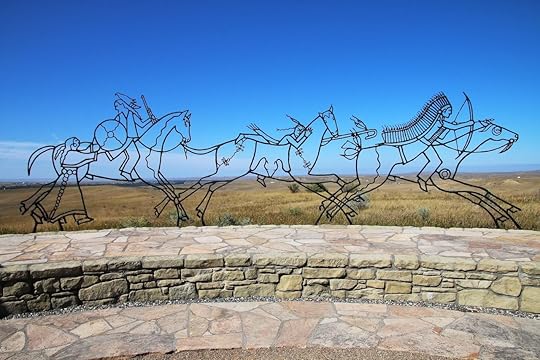
Photo: Don Mammoser/Shutterstock
On June 25 and 26, 1876, thousands of Lakota Sioux, Cheyenne, and Arapaho fighters came together to defeat the 7th Regiment of the US Cavalry. Under Lt. Col. Custer, the soldiers attacked the south-central part of Montana, with the goal of forcing the native peoples onto reservations. While Custer and several hundred others of European ancestry died in the battle, ultimately the native peoples’ sacred lands were taken from them and their relocation forced. This is a deeply meaningful site for many contemporary Native American people. Today members of the Crow tribe guide tours of the Little Bighorn Battlefield National Monument, where visitors can see the site of “Custer’s Last Stand” on Last Stand Hill; visit a museum of historic and prehistoric artifacts; reflect at the Indian Memorial; and walk through the National Cemetery. The national monument is on the Crow Agency directly off a major interstate.
2. Chaco Culture National Historical Park, New Mexico

Photo: William Silver/Shutterstock
The Chaco Canyon area is important because it served as the epicenter of the Puebloan peoples — the ancestors of the Hopi and others — at least 3,000 years ago. This was where astronomy, art, and trade began to flourish and then spread throughout the Southwest. The National Park System preserves the Chaco Culture National Historical Park, which features unique architecture, extensive rock art, and domestic and ceremonial structures. Archaeologists recently discovered pre-Colombian chocolate at the site, one indication of trade with people in Central America and beyond. There’s hiking, night sky viewing, and educational activities year-round. Though the site is in a somewhat remote part of New Mexico, it is easy to visit by car, bicycle, or through an organized tour.
3. Effigy Mounds National Monument, Iowa
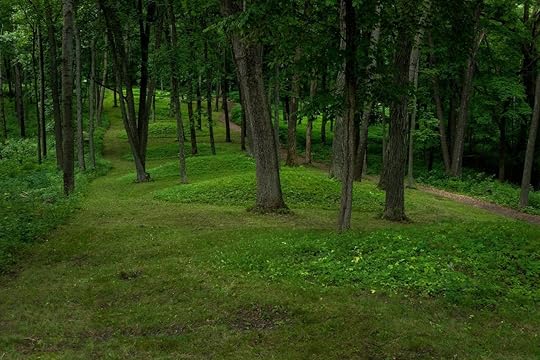
Photo: Effigy Mounds National Monument/Facebook
The Midwest of the US is sprinkled with giant earthworks that indigenous people built for purposes we still don’t thoroughly understand. Situated in Iowa, along the Mississippi River, the Effigy Mounds are shaped like lynx, water spirits, bison, turtles, and more. The builders created these structures about 1,400 years ago. In consultation with Native American groups, anthropologists have traced the lineage of more than 20 contemporary tribes who descend from this culture. The Effigy Mounds are open to visitors during daylight hours all year-round, except in extreme weather conditions, on Christmas, and on Thanksgiving. Barring icy road conditions, the Mounds are easy to get to.
4. Montezuma Castle National Monument, Arizona

Photo: Tom Forbes/Shutterstock
Montezuma Castle and the nearby Montezuma Well were important to the Sinagua people starting more than 800 years ago. The castle is a stunning, incredibly well-preserved, five-story cliff structure with 20 rooms. It took 300 years to build it alongside Beaver Creek, which attracts birds and other animals. Artifacts at the visitor center museum include stone tools, bone needles, and gems that indicate long-distance trade. Some Yavapai and Hopi tribal members trace their lineage back to the Sinagua who built this structure and the nearby well. The descendants of the architects sometimes return to the sites for private religious ceremonies. Visiting the Montezuma Castle National Monument is simple as it’s just off a major highway. An accessible trail takes tourists throughout the site.
5. Ocmulgee National Monument, Georgia

Photo: Joseph Thomas Photography/Shutterstock
The Ocmulgee sites trace more than 17,000 continual years of Native American heritage. Occupation began thousands of years before the arrival of the Europeans. It was at one time the largest archaeological dig in the United States, with sites ranging from ancient houses to historic villages to very old earthworks. An onsite museum housing more than 2,000 artifacts showcases their finds. Every September, over 300 Native Americans gather at the site for a public celebration of culture, including dancing, storytelling, music, and art. Ocmulgee is the ancestral homeland of the people of the Creek, or Muscogee, Nation. The Ocmulgee National Monument is open to the public and leashed pets. Six miles of trails thread through the site and bikes are only permitted on the main trail. The main entrance is just off a highway near the city of Macon.
6. Poverty Point State Historic Site, Louisiana
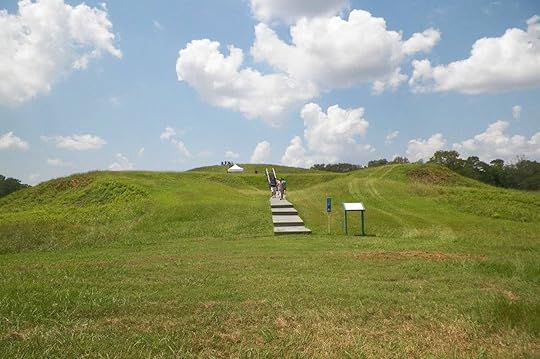
Photo: Poverty Point World Heritage Site/Facebook
Members of what is now called the Poverty Point Culture built the mysterious earthworks at this northeast Louisiana site almost 3,700 years ago. The site is heavily protected and is a UNESCO World Heritage site. No one is sure what the complicated concentric ridges and conical mounds, which surround a central plaza, were used for. Hypotheses range from trading centers to sites of religious ceremonies. The Poverty Point people were hunters and gatherers and fishers, and although there is no stone to quarry at the site, they crafted interesting objects out of rocks. Archaeologists are unsure what they were used for but the running hypothesis is that the objects improved cooking by holding heat. The Poverty Point State Historic Site is open to visitors nearly every day of the year and is easily reached by car.
7. Hopewell Culture National Historical Park, Ohio

Photo: Hopewell Culture National Historical Park/Facebook
Another mound site, Hopewell is 2,000 years old. It’s located in the Ohio River Valley, and was constructed by the Hopewell culture. Oral history tells us that the Hopewell culture used their mostly geometric mounds as sites of sacred ceremonies, including funerals and other rites. The mounds are 12 feet high and up to thousands of feet across, and the Hopewell culture built them for about 500 years. The Hopewell Culture National Historical Park protects six groups of earthworks, all of which are relatively close together and easy to visit by car. The park has activities including yoga, arts programs, summer lecture series, guided tours, and camping. There is no lodging in the park but there are hotels and inns nearby.
8. Knife River Indian Villages National Historic Site, South Dakota
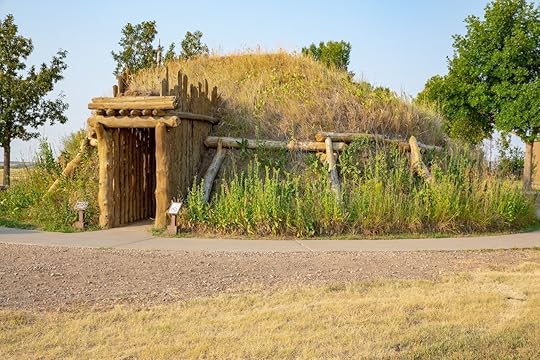
Photo: Traveller70/Shutterstock
The three groups of the Hidatsa tribe lived in these villages along the Missouri River for hundreds of years prior to the arrival of fur traders in 1750. The site has always been a major trade center, from prehistoric times through the Lewis and Clark expedition. The museum houses art made by indigenous people throughout the history of the villages’ occupation. Their descendants are now located on the Fort Berthold Reservation in west-central North Dakota. Visitors with a few hours to spend at Knife River Indian Villages National Historic Site can walk to Awatixa Xi’e Village (the Lower Hidatsa Site) and Awatixa Village (the Sakakawea Site). Site trails are open all year from sunrise to sunset.
9. Hovenweep National Monument, Utah and Colorado
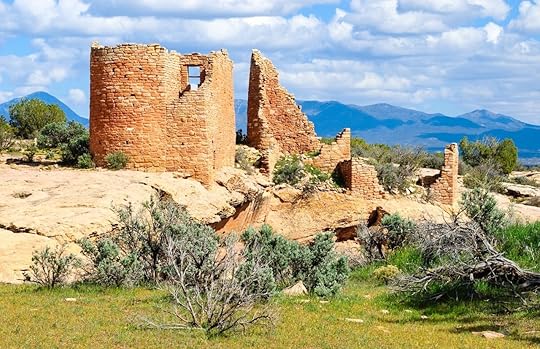
Photo: Zack Frank/Shutterstock
Hovenweep housed humans starting about 10,000 years ago, but it is best known for the six ancestral Pueblo villages scattered throughout the 20-mile expanse preserve. The area was continually occupied through the 1300s, when the Puebloans dispersed from the area. The six villages, with multistory stone structures exhibiting impressive masonry, housed a total of 2,500 people at any given time. In good weather, visitors can check out all six of the villages, which are somewhat isolated from one another. Visitors to Hovenweep National Monument meet at the visitor center at Square Tower Group, and drive to each of the other five villages. Spring is the best time to go, not just because of the wildflowers and birding, but because summers are extremely hot and winter conditions make some roads impassable. Still, this is one of the oldest sites in the Southwest, and seeing the structures make for a memorable adventure.
10. Pu’u Loa Petroglyphs, Hawaii

Photo: George Burba/Shutterstock
Located in Volcanoes National Park on Hawaii’s Big Island, Pu’u Loa consists of more than 23,000 lava etchings that are sacred to native Hawaiians, especially the Kalapana people. The etchings are in all kinds of shapes, like people, canoes, animals, concentric circles, and pecked dimples known as cupules. They appear to have been sometime created between 1200-1450 AD. Until relatively recently, native Hawaiians used to bury their babies’ umbilical cords in the lava near the petroglyphs, which was believed to ensure the child’s long life. Perhaps Pu’u Loa got its name from this practice, which translates to “The Hill of Long Life.” The National Park System has created a seven-mile walking trail to reach a boardwalk to see this site without damaging it.
11. Chumash Painted Cave State Historic Park, California

Photo: Pinterest/California State Park
Using ochre, shells, and charcoal, the Chumash people painted amazing cave art on the walls of this sandstone feature sometime in the 1600s. Neither the contemporary Chumash nor scholars know what the mostly red and black painted symbols mean, but Chumash descendants believe their ancestors used the cave to appease supernatural entities. One symbol likely denotes an eclipse that occurred in the late 1600s but otherwise, the designs’ significance is undecipherable. The pictographs are unique: there are no known others like them in the world. They are visible through an iron gate which protects them from vandals. They are important to the living Chumash even though their historical significance is lost. The Chumash Painted Cave State Historic Park is a small park, near Santa Barbara, and tourists often miss the parking area for the trail to the cave. It is open all year. 

More like this: 10 places in the US where you can experience Native American culture
The post 11 important Native American heritage sites in the US that you need to visit appeared first on Matador Network.

Matador Network's Blog
- Matador Network's profile
- 6 followers



